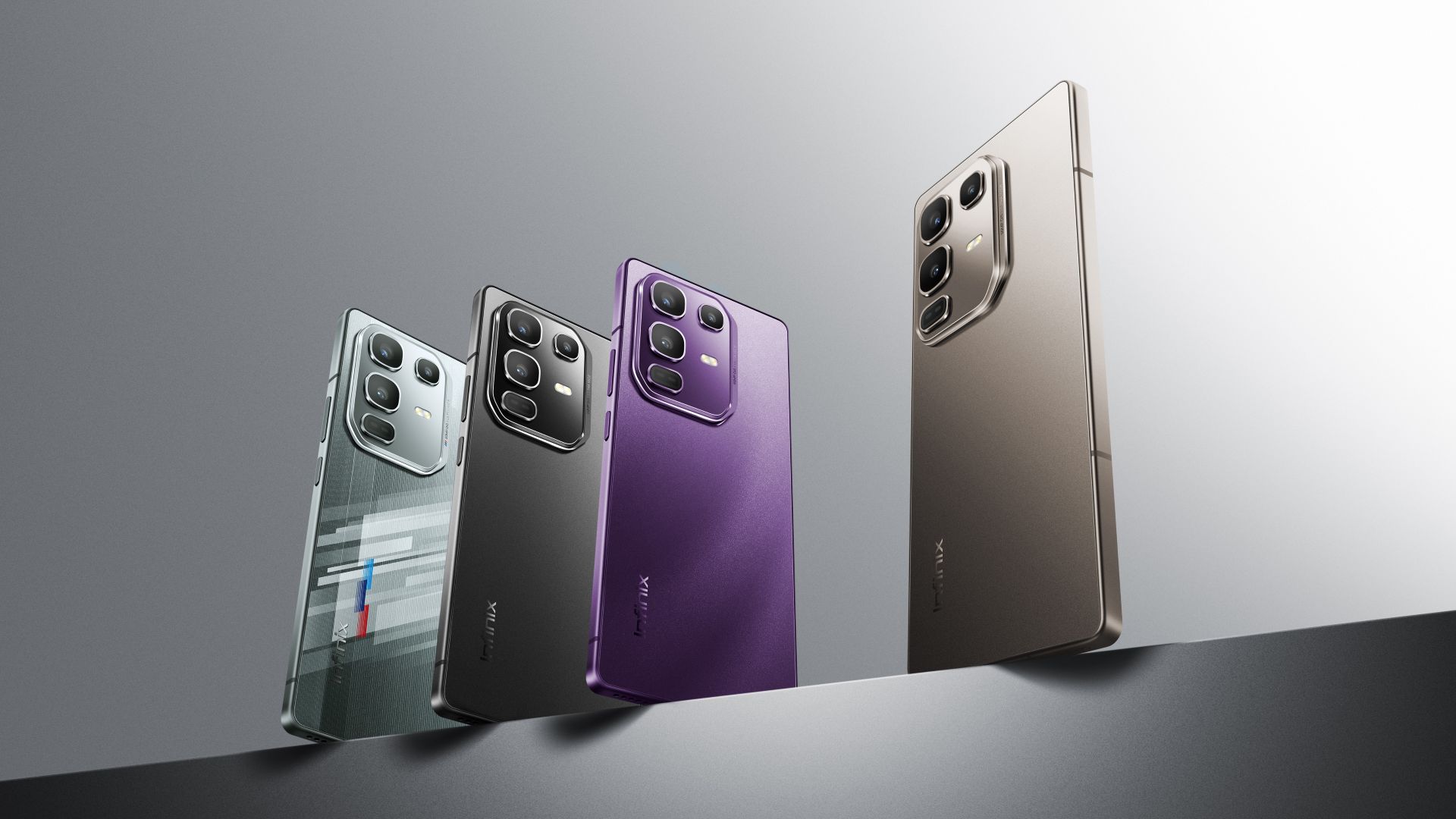Infinix has introduced its next generation of midrange phones with the Note 50 series, starting with three models: the Note 50, Note 50 Pro 4G, and Note 50 Pro+ 5G. More recently, the lineup has quietly expanded with the Note 50S—a refined follow-up to last year’s Note 50x, with better polish in both design and performance.
Last year’s Note 40 made waves with unexpected features like wireless charging in a budget phone. This time, Infinix is doubling down on hardware quality, camera upgrades, and AMOLED screens, even in the more affordable options.
Today, we’re taking a closer look at what sets these four phones apart, where the compromises are, and which one is actually worth your money.
Infinix Note 50
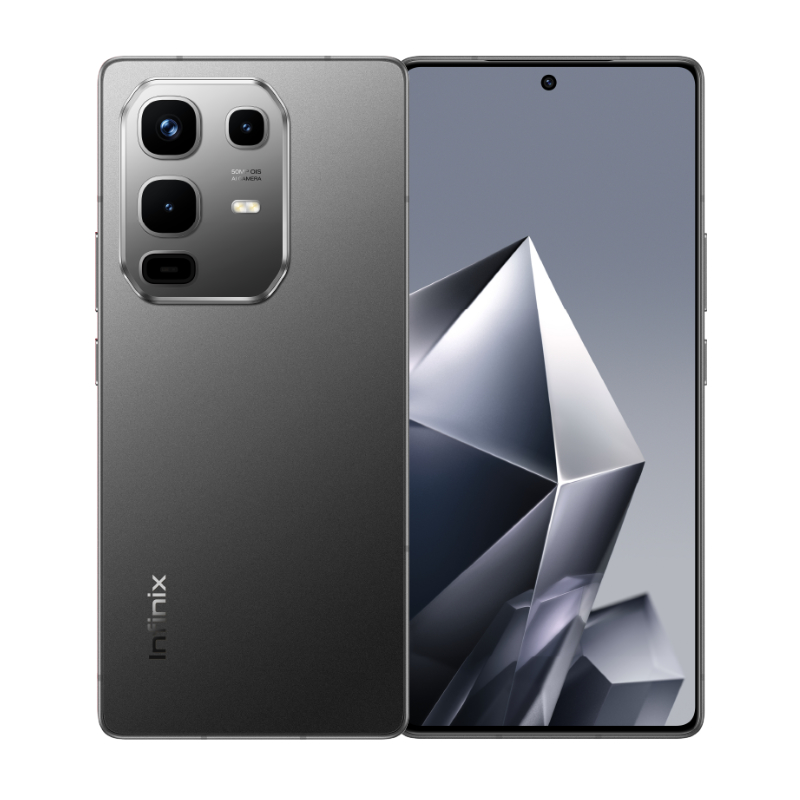
The Infinix Note 50 pushes past typical budget phone expectations with a build that feels far more premium than the price suggests. Its ArmorAlloy frame, crafted from a mix of Damascus steel and aluminium, gives it a sturdy yet comfortable hand-feel, while the refined matte finish adds to the polished look. Design-wise, the octagonal camera module adds a stylish edge, and options like the Racing Edition or Enchanted Purple help it stand out.
The 6.78-inch AMOLED display is tall, fluid, and rich in colour, supporting up to a 144Hz refresh rate and 1,300 nits of peak brightness. It’s sharp outdoors, smooth for scrolling, and immersive enough for streaming or gaming. Stereo speakers tuned by JBL, a responsive ambient light sensor, and an under-display fingerprint scanner round out the hardware experience, though the absence of a headphone jack and microSD card slot may bother some.
Performance is handled by the Helio G99 Ultimate chipset, which keeps things running without fuss across regular tasks and casual gaming. Backed by 8GB RAM and 256GB of storage, the phone stays responsive throughout daily use. On the software side, XOS 15 on Android 15 brings an extra layer of utility. AI tools are baked in across the interface—from circle-to-search and live translation to the Davido-voiced Folax assistant. You’ll also find handy extras like AI noise cancellation during calls and an AI eraser in the gallery.
The Bio-Active Halo lighting system adds a bit of character, responding to notifications, charging, and media. Battery life stretches comfortably across a day thanks to a 5,200mAh cell, and the phone supports both 45W wired and 30W wireless MagCharge. Reverse wireless charging is a rare perk at this price, as is bypass charging for heat management during gameplay.
Camera hardware takes a step back on paper—a 50MP main shooter and 13MP selfie cam—but daytime shots are sharp, colours stay natural, and OIS helps steady handheld videos. Low-light performance is decent enough for casual use, and the camera app packs enough AI enhancements to keep results shareable.
The Note 50 doesn’t radically change Infinix’s formula but refines it with smarter features, improved materials, and a surprisingly modern feel, right down to the missing headphone jack.
What we like about Infinix Note 50
- Excellent display and brightness.
- Extensive AI features.
- Fast charging and wireless charging support.
- Good main camera performance.
What to consider
- No headphone jack or microSD card slot.
- Selfie camera relies heavily on software processing.
- Slightly higher price compared to some competitors.
Infinix Note 50 Pro 4G
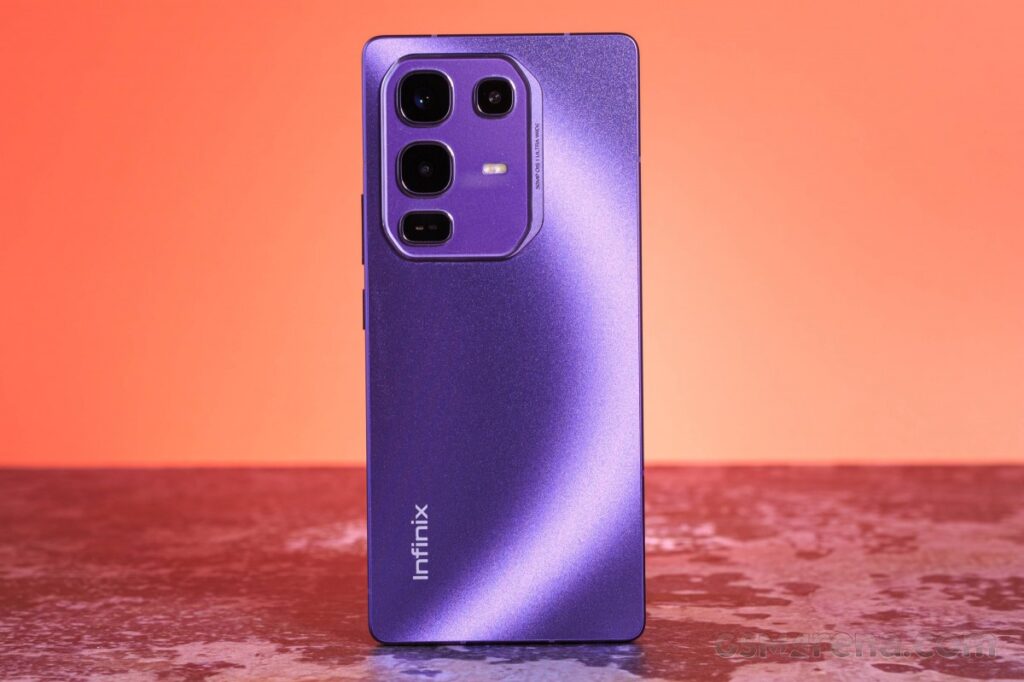
The Note 50 Pro 4G variant brings a solid mix of design upgrades and practical features to the budget segment. One standout is the Bio-Active Halo AI Lighting on the back, which doubles as a multi-purpose notification light and even includes heart rate and SpO2 sensors. The frame is made from what Infinix calls ArmorAlloy Metal, a fusion of materials inspired by Damascus steel and aerospace-grade aluminium, with extra attention to camera ring construction and thermal management.
Build quality aside, the phone is IP64-rated, a small but notable bump from its predecessor’s splash protection. The 5,200mAh battery handles 90W wired and 30W wireless charging, and even reverse charging is on the table, with bypass charging support for gamers or binge-watchers. Software-wise, it’s running Android 15 with XOS 15 and a promise of two major OS updates plus three years of security patches. There’s even a dedicated AI section in the settings where features are organised with built-in tutorials.
Under the hood, the Note 50 Pro 4G uses Samsung’s ISOCELL GN5 sensor, which still delivers strong results despite its age. And although this isn’t a 5G phone, it still feels well-specced for the price—just don’t expect cutting-edge gaming frame rates or consistent high-refresh use, as apps mostly run at 120Hz and the advertised 144Hz shows up only in the settings app.
Some things don’t hit the mark. The JBL-branded speakers have failed to impress across multiple Infinix phones, with complaints about tinny sound and distortion at higher volumes. Colour accuracy on the AMOLED display could also be better, something that’s been pointed out across Infinix models before. But the panel still looks decent, and the ultra-slim bezels are hard to ignore, especially when compared to some pricier phones.
What we like about the Infinix Note 50 Pro
- IP64 rating.
- Heart rate sensor.
- Very fast charging plus wireless option.
- XOS packs plenty of AI.
- Great zoom action, solid primary camera.
What to consider
- Average battery life overall.
- No eSIM support.
- No Audiojack.
- Modest performance.
- No 5G.
Infinix Note Pro+ 5G
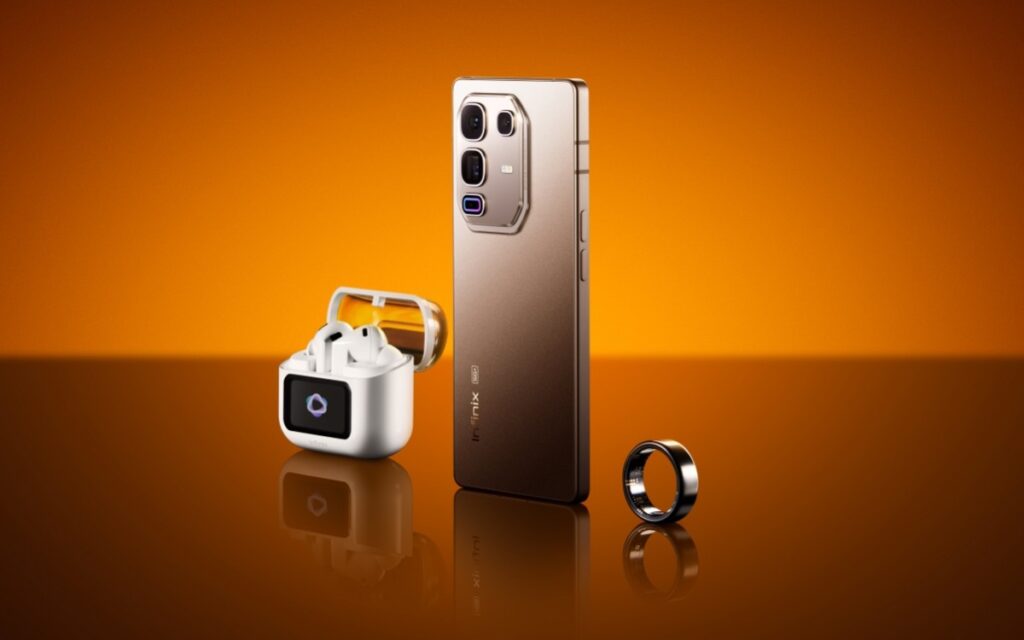
The Infinix Note 50 Pro+ 5G takes a bold swing at the mid-range space, pushing higher-end features into a more affordable bracket. Its standout build is led by an ArmorAlloy metal frame—something Infinix claims is a first at this level—and paired with a unique octagonal camera design that gives the phone a more refined and less familiar look. The 6.78-inch AMOLED display supports a 144Hz refresh rate, 10-bit colour, and a peak brightness of 1300 nits, which should make content pop and keep things smooth under most lighting conditions. Extra touches like PWM dimming and low-blue light certification suggest Infinix is also eyeing user comfort.
Photography is clearly one of the main focus points. The periscope camera offers up to 100X zoom, which is ambitious for this segment, and the primary Sony IMX896 sensor should help deliver solid results. There’s also an ultrawide shooter for added flexibility, though how the AI RAW processing holds up in practice remains to be seen. Charging tech gets a serious boost too, with 100W wired and 50W wireless speeds backed by a 5200mAh battery using Infinix’s newer silicon-carbon material. Reverse charging is also available, both ways.
Performance is handled by the Dimensity 8350 Ultimate chip, supported by AI gaming enhancements and a cooling system, which suggests the phone should be capable of handling heavier loads. Infinix is also pushing AI integration heavily, with Folax-based tools meant to help with summaries, creativity, and task automation. It’s an interesting direction, even if the real value of these tools will depend on how well they blend into day-to-day use. Rounding out the feature set are JBL stereo speakers, IP64 protection, an IR blaster, and even sensors for heart rate and blood oxygen levels like in the Pro variant.
What we like about the Infinix Note 50 Pro+ 5G
- Beautiful AMOLED display.
- Versatile camera system with telephoto lens.
- Wireless charging support.
- Feature-rich AI software.
What to consider
- Only two OS updates promised.
- Video stabilisation could improve.
- No eSIM support.
- Slightly weak battery endurance on voice calls.
- Underperforming HDR display.
Infinix Note 50s 5G
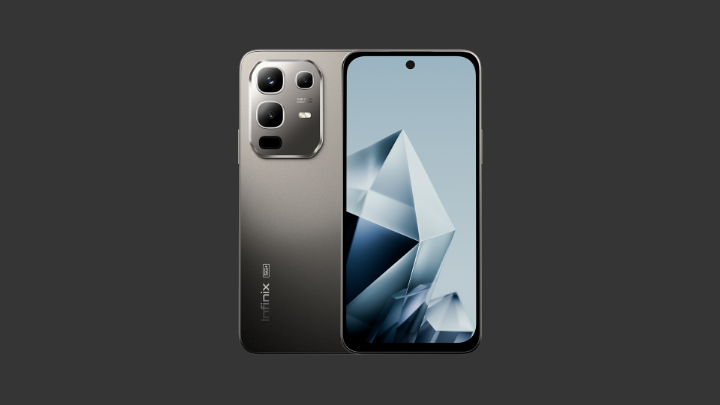
The Infinix Note 50s follows up on the Note 50x with some meaningful refinements that make it feel more polished across the board. The most notable upgrade is the display, a curved 6.67-inch AMOLED with a 144Hz refresh rate, up to 1300 nits brightness, HDR10, and full DCI-P3 colour coverage. It looks sharp, vibrant, and premium, which isn’t something you get to say often in this segment. The phone itself feels light and well-balanced in the hand, helped by a slim chassis with soft curves and a matte metallic finish that adds to its appeal. Infinix kept the dual JBL stereo speakers, though the output isn’t particularly loud and lacks the richness some rivals deliver.
Powering the phone is MediaTek’s Dimensity 7300 Ultimate, paired with LPDDR5X RAM and UFS 2.2 storage. Performance is solid for everyday use, multitasking feels smooth, and gaming runs reliably at medium settings with stable frame rates. There’s even 90 fps support in Call of Duty Mobile for those who care. Infinix is pushing the phone as 5G+, promising better connectivity in supported areas, and early signs point to respectable speeds. The software experience is relatively clean and feature-rich, which adds to its usability without bogging things down.
The cameras do a good job in daylight, especially the 64MP Sony IMX682 main sensor, which produces sharp and punchy photos. Skin tones from the front camera are tuned for a flattering look rather than realism, and results tend to lean toward vibrant rather than true-to-life. Edge detection in portraits is passable, though not on par with what some other phones in the segment can pull off. The Active Halo lighting around the camera module adds a bit of flair and serves a few practical functions too.
Battery life is backed by a 5,500mAh cell with 45W fast charging, enough to get through a day comfortably, even under heavy use. Charging speeds aren’t chart-topping but are reasonable. Features like bypass charging and a low-temperature mode show that some thought went into thermal and battery health management. There’s also reverse charging, which could come in handy on occasion. The lack of storage expansion is something to keep in mind, but overall, the Note 50s strikes a good balance with a few standout features in a familiar package.
What we like Infinix Note 50s
- Slim, lightweight design
- Vibrant curved AMOLED display
- Strong performance, LPDDR5X RAM at this price point
- Surprisingly good main camera and crisp daylight photos
What to consider
- Heats up and lags outdoor
- No expandable storage
- Lacks ultrawide camera
- Curved display means accidental touches while gaming
Our Verdict
Xiaomi may still dominate Nigeria’s rounded smartphone market, but Infinix is closing in fast and the Note 50 series shows exactly why. Transsion’s reputation for value hasn’t changed, but this lineup adds polish, better build quality, and a feature set that challenges the big players.
Across the board, you get perks you don’t usually find at these prices: curved AMOLED screens, stereo speakers, wireless charging, IP ratings, and even little things like FM radios and IR blasters—these are, however, not so rare at their prices (see below). The Note 50 Pro 4G stands out as the most balanced model, offering a good display, strong cameras, and fast charging, though its processor limits gaming and 5G support.
The Note 50S hits a practical middle ground. It’s not the fastest, but it delivers where it matters: AMOLED screen, clean UI, and capable cameras. Limited storage and heat under load are trade-offs, but overall, it’s well-rounded.
As for the Note 50 Pro+ 5G, it’s ambitious and powerful, but the AI gimmicks still feel half-baked. You’re mostly paying for better performance and build quality here, but unless you really need 5G, the Pro 4G offers better overall value.
Competition is tight though—with Xiaomi, Samsung, Realme, and even Nothing in the mix—but Infinix has shown with the Note 50 series that it can keep up.
Evolution of Infinix Note series till date
- Infinix Note 3 (2016): Introduced with a 6.0″ Full HD display, 4500mAh battery, fast charging, and fingerprint scanner, setting a foundation for large-screen devices with robust batteries.
- Infinix Note 7 (2020): Featured a 6.95″ display, MediaTek Helio G70 processor, and a 48MP quad-camera setup, marking a shift towards enhanced multimedia capabilities.
- Infinix Note 10 Series (2021): Offered a 6.95″ FHD+ 90Hz display, Helio G95 chipset, and up to 8GB RAM, focusing on improved performance and smoother visuals.
- Infinix Note 30 Series (2023): Introduced All-Round FastCharge technology with up to 68W wired and 15W wireless charging, 120Hz displays, and 108MP cameras, enhancing both charging speed and photography.
- Infinix Note 40 Series (2024): Continued the trend with AMOLED displays, advanced fast charging, and AI-powered features, catering to professionals seeking reliable and efficient devices.
- Infinix Note 50 Series (2025): Launched with AI functionalities and upgraded hardware, indicating a focus on intelligent features and performance enhancements.
New Infinix Note 50 Series – Key Specifications
| Feature | Note 50 4G | Note 50s 5G | Note 50 Pro 4G | Note 50 Pro+ 5G |
|---|---|---|---|---|
| Display | 6.78″ AMOLED, 144Hz | 6.67″ Curved AMOLED, 144Hz | 6.78″ AMOLED, 144Hz | 6.78″ AMOLED, 144Hz |
| Processor | MediaTek Helio G100 | MediaTek Dimensity 7300 | MediaTek Helio G100 Ultimate | MediaTek Dimensity 8350 |
| RAM / Storage | 8GB / 128GB | 8GB / 128GB, 256GB | 8GB / 256GB | 12GB / 256GB |
| Rear Camera | 50MP + 8MP | 64MP Sony IMX682 | 50MP OIS + 8MP Ultra-Wide | 50MP OIS + 8MP Ultra-Wide |
| Front Camera | 32MP | 13MP | 32MP | 32MP |
| Battery | 5,000mAh, 45W charging | 5,500mAh, 45W charging | 5,200mAh, 90W wired + 30W wireless | 5,200mAh, 90W wired + 30W wireless |
| Operating System | Android 14, XOS 15 | Android 15, XOS 15 | Android 15, XOS 15 | Android 15, XOS 15 |
| 5G Support | No | Yes | No | Yes |
| Colours | Titanium Grey, Ruby Red, Mountain Shade, Shadow Black | Marine Drift Blue (featuring a unique scent-infused vegan leather back), Titanium Grey, and Burgundy Red | Titanium Grey, Enchanted Purple, Racing Edition, Shadow Black | Titanium Grey, Enchanted Purple, Racing Edition |
Pricing and Availability
- Nigeria: Base Note 50 is around ₦311,500 ($193) and ₦358,500 ($222). The Infinix Note 50 Pro 4G is available for approximately ₦370,800 (around $230) for the 8GB/256GB variant. The Note 50 Pro+ 5G is priced between ₦600,000 ($371) and ₦700,000 ($433), depending on the retailer.
- Kenya: Base Note 50 4G is priced between KES 22,200 and KES 25,999. The Note 50 Pro 4G goes for around KES 28,800. The Note 50 Pro+ 5G is listed at about KES 41,500, depending on the retailer.
- Bangladesh: The Infinix Note 50 4G starts at BDT 27,999, while the Note 50 Pro 4G is priced around BDT 31,999. The Pro+ 5G version isn’t widely available yet in most outlets.
- Pakistan: The Note 50 4G is currently available between PKR 55,999 and PKR 64,990, depending on the store and variant. Other models like the Pro 4G and Pro+ 5G are yet to be officially listed.
This also confirms that the Infinix Note 50s isn’t widely available yet. We’ll update this section as soon as availability and pricing are confirmed. If you’re looking to purchase any of the Note 50 models, you can check Jumia, Slot, local Infinix stores, or authorised retailers in your country. Availability may vary by location, so it’s best to confirm directly with the store for the most accurate and up-to-date information.
See Also: Which Infinix Hot 50 4.5G phone should you buy today?
Get passive updates on African tech & startups
View and choose the stories to interact with on our WhatsApp Channel
Explore
